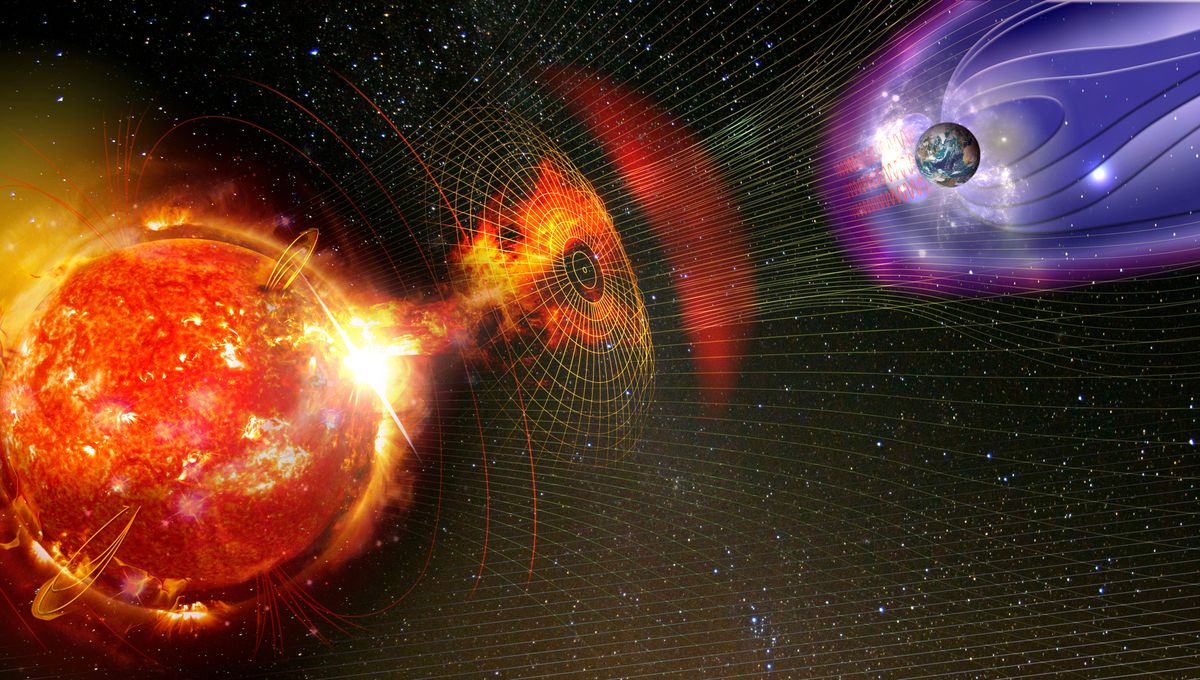
There are plenty of local issues with the United States’ power grid. Texas, for example, continues to have weather-related outages. But there is another threat that should be considered – and it comes from beyond Earth. The effects of space weather, of a geomagnetic storm, could be disastrous.
Researchers have found two particularly vulnerable cities: Washington DC and Milwaukee. Researchers have found two particularly vulnerable cities: Washington DC and Milwaukee. The work was done by Dr Lauren Orr, from the University of Warwick, in collaboration with Professor Sandra Chapman, of the University of Warwick, and Dr Ryan McGranaghan, of NASA’s Jet Propulsion Laboratory in California.
There is actually a plan in place in New Zealand that if there’s a big storm, such as the one that we had in May, they turn off certain transformers that they thought were most vulnerable.
Dr Lauren Orr
Geomagnetic storms like the one we saw in May are not extremely common, but they are also not rare: solar events of that magnitude happen often enough to be a concern. Their damaging power is similar to that of flooding or extreme temperatures. In particular, the geomagnetically induced currents (GICs) that can form during such an event can damage both transformers and power lines.
These currents can overload transformers. In the famous Carrington Event of 1859, telegraph stations in the United States were disrupted, an operator got an electric shock, and systems caught fire. That was the biggest solar storm in recent history, but we know that GIC can harm transformers and cause blackouts. During the May storm, there were power grid irregularities reported.
The team used network science to work out the resilience of the power grid. A network can be between computers or people, with the elements being nodes, but it can also apply to transformers. Using data from monitoring stations, the researchers were able to find supernodes that are at risk, such as Washington DC and Milwaukee.
Estimating resilience is important as there are still gaps in our knowledge. Even predicting solar storms has its limits, although recent research could give us an edge, by allowing prediction before a solar storm begins. Still, once the space weather hits, the damage can be extensive.
There is a lot of concerning data, but the team admits that there is less data than they would like. The team provides multiple physical explanations for why certain areas are at risk, but without more granular data it is difficult to establish. Without such data, the network analysis they constructed might weigh more in certain spots compared to others.
“It could be that the transformers are old. It could be that they’re single-phase instead of triple-phase. Or it could be reasons like the Earth is really conductive in those areas or the aurora tends to sit over them,” Dr Orr told IFLScience. “What we would like to do is further study to see why this would be the case. It could have to do with our network construction.”
The main advice to power grid operators is to provide more monitors. The United Kingdom has only four. The US has a couple of hundred, but there are thousands of transformers across the States. And data has to be requested after every single space weather event. Monitoring can help plan strategies to keep the grid safe and the power flowing.
“One thing we’re trying to do in the UK is persuade them to install more monitors so that we can actually see what’s going on and which areas are appearing as the most vulnerable,” Dr Orr told IFLScience.
“New Zealand has done quite a lot of work. They’ve worked with their power grid to make mitigation plans. There is actually a plan in place in New Zealand that if there’s a big storm, such as the one that we had in May, they turn off certain transformers that they thought were most vulnerable. The energy would channel through different connections and different lines. So that those transformers were not taking all the load.”
Dr Lauren Orr presented her findings at this week’s National Astronomy Meeting at the University of Hull.
Source Link: These Are The US Cities Most Vulnerable To Space Weather